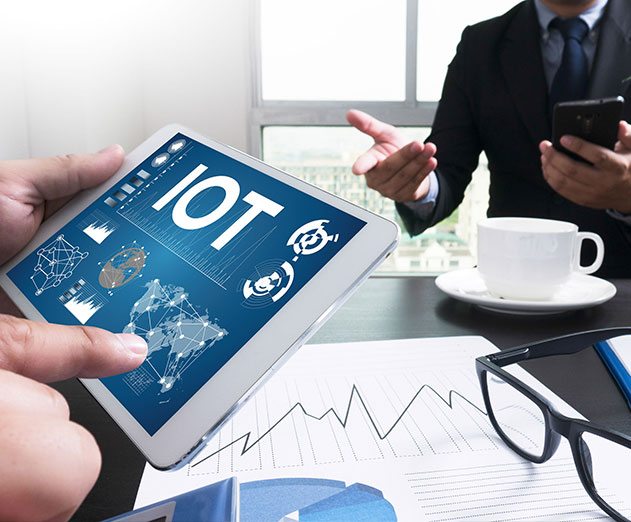IoT
IoT and LPWA revenue expected to exceed $200B by 2025
Thursday, February 16, 2017

|
Richard Harris |
IoT value chain revenue report analyses future growth in diverse sectors and discusses telecom opportunities.
Analysys Mason has published a new report entitled “IoT value chain revenue: worldwide trends and forecasts 2016–2025” that analyses future growth in diverse sectors and discusses where the greatest opportunities lie for telecoms operators.
Report author and Principal Analyst Michele Mackenzie outlines some of the key findings of the report.
The total addressable revenue for mobile operators in IoT will be over USD200 billion by 2025. The total revenue of solutions supported by traditional cellular (e.g. 2G, 3G, 4G) and LPWA (e.g. NB-IoT, LoRa) is forecast by Analysys Mason to reach USD201 billion in 2025.
Report author and Principal Analyst Michele Mackenzie outlines some of the key findings of the report.
The total addressable revenue for mobile operators in IoT will be over USD200 billion by 2025. The total revenue of solutions supported by traditional cellular (e.g. 2G, 3G, 4G) and LPWA (e.g. NB-IoT, LoRa) is forecast by Analysys Mason to reach USD201 billion in 2025.
Spending on connectivity will be USD28 billion in 2025, just 14% of this total addressable market.
Mobile operators and other players in the value chain are seeking additional incremental value by offering other components of the value chain in addition to connectivity; hardware and applications.
For new LPWA networks, connectivity will generate a much lower share of the total spend than for IoT solutions using traditional cellular.
For traditional cellular (e.g. 2G, 3G, 4G) the application component generates 72% of the value in 2025, with hardware contributing 11% and connectivity 17%. The application layer is a big opportunity for all players in the value chain and mobile operators are developing solutions to take a greater role in the applications component.
For LPWA, the largest share of revenue is generated by hardware, 49%, with applications contributing 43% and connectivity only 8%. LPWA networks address high-volume sectors (such as smart metering), so large volumes of devices will be deployed.
For traditional cellular the biggest market is Automotive (connected car). The total value chain will reach USD63 billion in 2025. Application will be 76% of the total value, connectivity will constitute 19% and the remainder will be hardware related revenue.
The Utilities market will generate USD21 billion in 2025. Hardware constitutes 55.5%, applications 38.5% and connectivity 6%.
The Smart Building market will grow to USD17 billion in 2025. Hardware will comprise 55.7%, applications 39.6% and connectivity 4.7% of total revenue.
The report also highlights how geographic split of the revenue differs significantly for traditional cellular and LPWA.
Emerging Asia-Pacific (principally China) will be the largest individual region generating 24% of traditional cellular revenue in 2025. China has driven cellular IoT adoption in many sectors. Developed regions (including Western Europe, Central and Eastern Europe, Developed Asia-Pacific and North America) will generate the largest share of LPWA network revenue throughout the forecast period, contributing just over 75% of total revenue in 2025.
Mobile operators and other players in the value chain are seeking additional incremental value by offering other components of the value chain in addition to connectivity; hardware and applications.
For new LPWA networks, connectivity will generate a much lower share of the total spend than for IoT solutions using traditional cellular.
For traditional cellular (e.g. 2G, 3G, 4G) the application component generates 72% of the value in 2025, with hardware contributing 11% and connectivity 17%. The application layer is a big opportunity for all players in the value chain and mobile operators are developing solutions to take a greater role in the applications component.
For LPWA, the largest share of revenue is generated by hardware, 49%, with applications contributing 43% and connectivity only 8%. LPWA networks address high-volume sectors (such as smart metering), so large volumes of devices will be deployed.
For traditional cellular the biggest market is Automotive (connected car). The total value chain will reach USD63 billion in 2025. Application will be 76% of the total value, connectivity will constitute 19% and the remainder will be hardware related revenue.
For LPWA the biggest markets are Utilities and Smart Buildings.
The Utilities market will generate USD21 billion in 2025. Hardware constitutes 55.5%, applications 38.5% and connectivity 6%.
The Smart Building market will grow to USD17 billion in 2025. Hardware will comprise 55.7%, applications 39.6% and connectivity 4.7% of total revenue.
The report also highlights how geographic split of the revenue differs significantly for traditional cellular and LPWA.
Emerging Asia-Pacific (principally China) will be the largest individual region generating 24% of traditional cellular revenue in 2025. China has driven cellular IoT adoption in many sectors. Developed regions (including Western Europe, Central and Eastern Europe, Developed Asia-Pacific and North America) will generate the largest share of LPWA network revenue throughout the forecast period, contributing just over 75% of total revenue in 2025.

Become a subscriber of App Developer Magazine for just $5.99 a month and take advantage of all these perks.
MEMBERS GET ACCESS TO
- - Exclusive content from leaders in the industry
- - Q&A articles from industry leaders
- - Tips and tricks from the most successful developers weekly
- - Monthly issues, including all 90+ back-issues since 2012
- - Event discounts and early-bird signups
- - Gain insight from top achievers in the app store
- - Learn what tools to use, what SDK's to use, and more
Subscribe here









